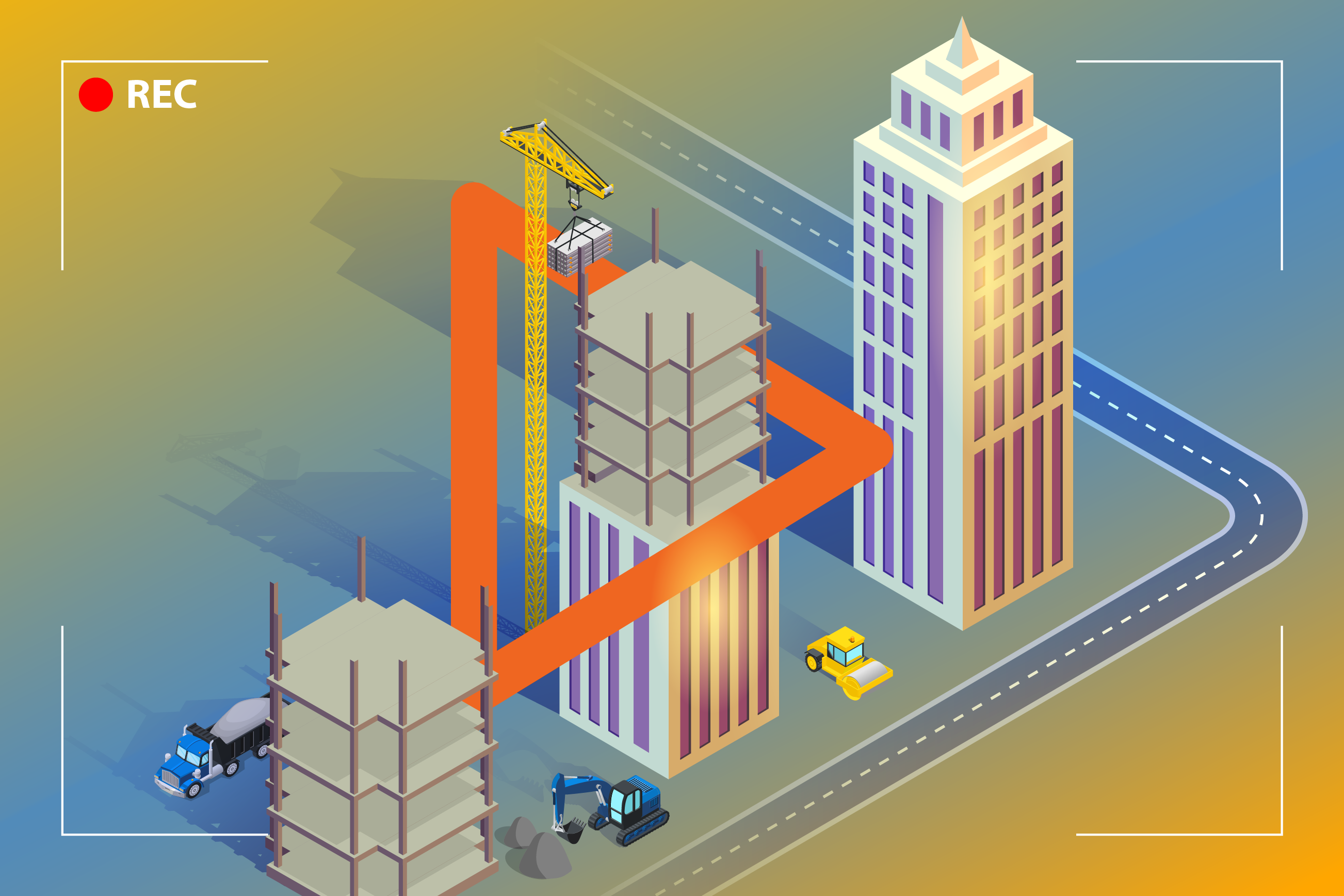

How should you present your next construction video?
Time-lapse, of course!

Construction work is not something you can finish in a day. And most buildings are designed to have a life of a hundred years or more. Having a way to “immortalise” all this hard work and see a location transform to its full vision is important for the legacy of a building.
In years past a construction timelapse involved highly specialised equipment and a lot of man hours but new technology, such as specialised construction time-lapse cameras and consumer products like GoPros make it possible for the home builder to attempt it.
The timelapse should showcase the construction of your building from the ground up to the finishing touches. For commercial spaces a construction or build timelapse can be used for the grand opening, to show potential tenants or even demonstrate design innovations or standardisation for other builds.
Here are some tips:
- Decide the length of your timelapse video
The first thing you have to envision is the end result. How long would you want your video to be, and how long will the shoot be? The answer will affect things like your camera settings – such as shot interval. The shorter the time, the faster the intervals would be. If you have a shoot lasting three to nine months, the ideal time-lapse interval would be 10 and 60 minutes. This will make your life a lot easier when it comes to editing.
- Use multiple angles and plan them ahead
The temptation will be to do a single shot from one angle. But that will get boring pretty quickly. Smart construction timelapses tell a story. So the angle for the foundations might be different than that for the building going up.
As our Content Director, Erik Magelssen, says, “You want to tell a story about the building, and make it look epic, so you have to find those angles that are wide enough to show the scope but also close enough to show the details you want. That’s why it’s important to have multiple camera angles to give visual variety, tell the story in unique ways, and help the viewer see how this building or project took shape.”
- Zoom in and out
Tell the story of your construction by playing around with what you focus on. Start with angle, an establishing shot, but then focus in on a detail of the construction. And then repeat. This will sustain interest in the video. It will also increase the work involved and may require secondary camera work. For example one camera might cover a view of the whole site over months, and then you might shoot something more specific over hours from a closer angle. Think about how much work you want to put into the project.
- Ensure adequate data storage and power
As construction time-lapse is a project with a long-term horizon, having adequate storage and camera power to capture every action is crucial—obviously, the longer your project timeframe, the bigger storage, and power you would need.
You can either use the internal memory card with the camera, which mostly ranges from 32GB to 256GB, or the cloud for unlimited storage if your camera is connected to the web. For power, you can rely on an internal battery, solar plus battery, or mains power. One consumer camera promises a six-month battery life plus a mains option.
- Protect the camera and check on it
Rain, snow, dust, grime and even bird poo can potentially spoil your hard work by obscuring the shot, or ruining your camera. Construction machines and vehicles can accidentally knock the camera out of position. Make sure you have a weather-proof, and potentially, shock-proof, housing. Check on the camera regularly to ensure it is in good working order, positioned correctly and the lens is clean.
- Choose your timelapse style
There are a number of timelapse styles: such as regular motion or flow motion. A hyper-lapse might be possible in certain circumstances. Or even a combination.
Here are some examples:
- Choose the right music
We’ve made the case why music and sounds play a vital role in your videos, and it’s no different when it comes to time-lapse videos. Try and select music that has an upbeat and “optimistic” tone; it’s sort of a prayer for your building in years to come. Don’t be afraid to use multiple tracks to represent different stages of construction.
Capturing the birth of a building
“Although time-lapse is different when it comes to time, meaning you can see years of development in minutes, the principle remains the same when compared to a traditional video, you still have to pick your focus. In this case, it’s the building itself. You have to show how the building will impact its surroundings, including humans and the environment,” said Erik.
A building can become an extremely important landmark and icon over time. Creating a time-lapse is a great way to immortalise the work that went into the design and construction and tell the story of why a building has been made like it is. It is the very first moment of a structure that people might live or work in over many generations.
Read more from Click2View:
- Confused by the Funding Terminology in Start-up? We’ve Got You Covered
- Incorporate These Two Ingredients into Your Content
- A Beginner’s Guide to Black and White Hat SEO
- 7 Types of Infographics You Should Know
Sign up to our newsletter for a weekly update on the latest content marketing news. Don’t forget to subscribe to our YouTube channel too!
Click2View is Southeast Asia’s premiere full-service independent B2B content marketing agency servicing clients like Microsoft, Google, Visa, Prudential, and the Lee Kuan Yew School of Public Policy.








